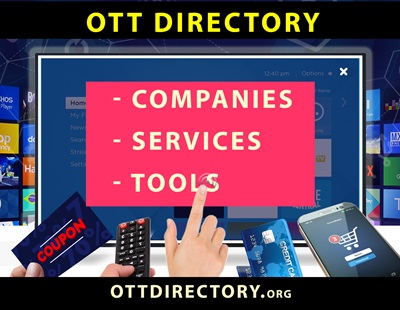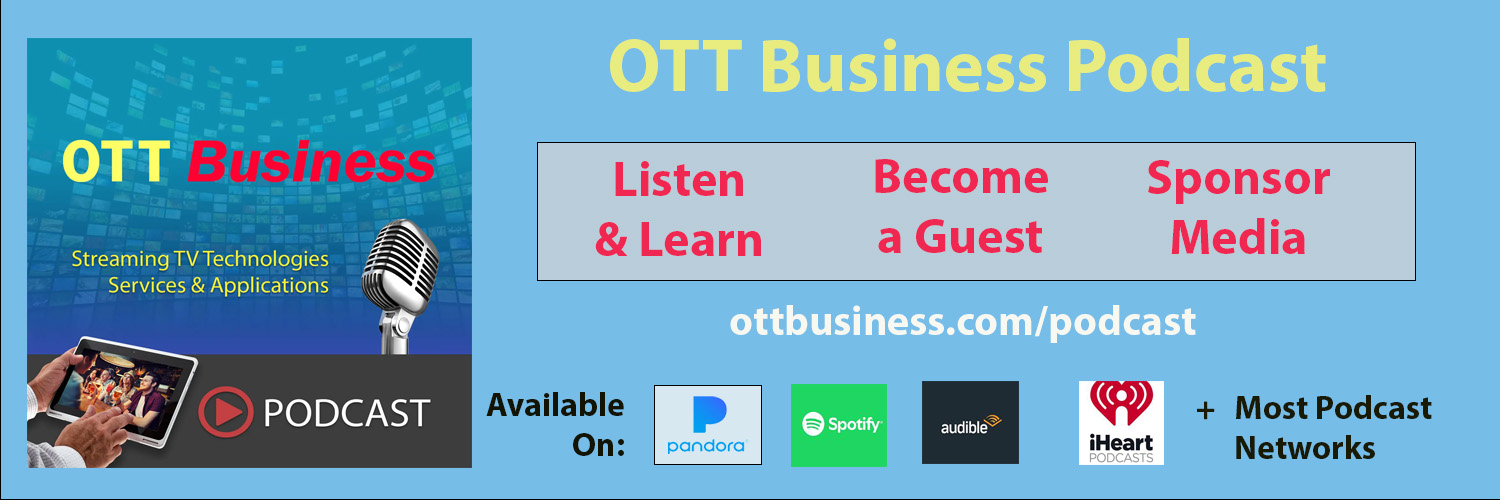Rights Management Tools
 Rights management tools for OTT and streaming TV systems and service providers ensure the secure administration, tracking, and enforcement of content usage rights and licensing agreements. These tools solve key issues such as unauthorized access, compliance with licensing agreements, and accurate royalty distribution. Key features include advanced analytics and insights, providing data-driven decision-making capabilities; automated licensing to streamline enforcement and reduce errors; and content encryption to safeguard intellectual property. They also offer detailed audit trails for accountability, compliance management to adhere to legal standards, and integration capabilities to ensure smooth workflow within existing systems. Additional features such as DRM interoperability, customizable workflows, and user access controls enhance security and operational efficiency. Learning more about rights management tools is essential for any OTT provider looking to protect their content, maintain compliance, and improve overall operational efficiency.
Rights management tools for OTT and streaming TV systems and service providers ensure the secure administration, tracking, and enforcement of content usage rights and licensing agreements. These tools solve key issues such as unauthorized access, compliance with licensing agreements, and accurate royalty distribution. Key features include advanced analytics and insights, providing data-driven decision-making capabilities; automated licensing to streamline enforcement and reduce errors; and content encryption to safeguard intellectual property. They also offer detailed audit trails for accountability, compliance management to adhere to legal standards, and integration capabilities to ensure smooth workflow within existing systems. Additional features such as DRM interoperability, customizable workflows, and user access controls enhance security and operational efficiency. Learning more about rights management tools is essential for any OTT provider looking to protect their content, maintain compliance, and improve overall operational efficiency.
Rights Management Tools
Archiware – Archiware provides data and media asset management solutions specializing in backup, synchronization, and archiving for the OTT and Streaming TV industry.
Axinom – Axinom offers robust DRM solutions supporting multiple key encryptions and SPEKE 2.0 for secure content protection across various platforms.
BuyDRM – BuyDRM provides the KeyOS Multi-DRM Platform, offering secure content protection and rights management for various digital media formats.
Bynder – Bynder provides digital asset management and creative project management to maintain brand consistency.
CastLabs – CastLabs offers DRMToday, a cloud-based DRM licensing service delivering billions of licenses monthly with extensive global reach and low latency.
Digify – Digify provides electronic document security with features like digital rights management and access controls.
DRM-X – DRM-X 4.0 offers a comprehensive DRM platform for encrypting various digital content formats with flexible watermarking and screen recording prevention.
Human Digital – Human Digital provides identity verification and fraud prevention solutions for people and their personas.
Irdeto – Irdeto offers comprehensive digital platform security, including DRM solutions to protect content and enhance secure distribution across OTT platforms.
LockLizard – LockLizard provides document copy protection using strong encryption and public key technology to prevent unauthorized sharing and piracy.
MarqVision – MarqVision provides a platform for managing and enforcing digital rights to protect online content.
Mediagenix – Mediagenix provides advanced content management and distribution solutions for the OTT and Streaming TV industry.
VdoCipher – VdoCipher provides DRM-encrypted video streaming technology designed to prevent unauthorized downloads and ensure secure video hosting.
Verimatrix – Verimatrix provides advanced DRM solutions that integrate seamlessly with various platforms to ensure content security and flexible distribution.
Vitrium Security – Vitrium provides DRM software solutions to protect videos, documents, images, and audio files.
Vualto – Vualto offers cloud-based DRM and content protection services with real-time tracking and reporting to ensure secure media distribution.
Rights Management Tools Key Features
Analytics and Insights
Provides advanced analytics and insights into content performance and rights utilization, enabling data-driven decision-making. This feature is important because it allows OTT providers to optimize content strategy and improve user engagement based on detailed usage patterns.
Audit Trails
Maintains detailed audit logs of all activities related to content rights management, providing transparency and accountability. Audit trails are crucial for tracking changes, ensuring data integrity, and supporting compliance with legal and regulatory standards.
Automated Licensing
Automates the process of managing and enforcing licensing agreements, reducing manual intervention and potential errors. This feature is important because it streamlines operations, minimizes human errors, and ensures that licensing terms are consistently applied.
Compliance Management
Ensures adherence to local and international copyright laws and industry regulations, reducing the risk of legal issues. Compliance management is vital for avoiding costly fines and legal disputes while ensuring content is used in accordance with all applicable laws.
Content Encryption
Ensures secure delivery and protection of content through advanced encryption standards, preventing unauthorized access and piracy. This is important for safeguarding intellectual property and maintaining the trust of content creators and distributors.
Content Metadata Management
Supports detailed metadata management to enhance content discoverability and accurate rights tracking. Proper metadata management is essential for organizing and retrieving content efficiently, ensuring that rights are correctly attributed and utilized.
Content Watermarking
Applies watermarks to content to trace and identify unauthorized distribution, enhancing security and control. This feature is important for protecting content from piracy and ensuring that any leaks can be traced back to the source.
Contract Management
Manages the entire lifecycle of content licensing contracts, from creation to renewal and termination, ensuring clear and enforceable agreements. Effective contract management is crucial for maintaining clear terms, reducing disputes, and ensuring all parties fulfill their obligations.
Customizable Workflows
Offers customizable workflows to adapt to specific business processes and requirements, enhancing operational efficiency. Customizable workflows are important for tailoring the rights management process to fit the unique needs of different organizations, improving productivity and accuracy.
DRM Interoperability
Supports multiple Digital Rights Management (DRM) systems, ensuring flexible and secure content protection across different platforms. DRM interoperability is vital for protecting content across various devices and services, ensuring broad compatibility and security.
Geolocation Restrictions
Implements geolocation-based restrictions to control where content can be accessed, ensuring compliance with regional licensing agreements. This feature is crucial for adhering to geographical licensing restrictions and maximizing the value of content rights in different markets.
Integration Capabilities
Seamlessly integrates with existing OTT platforms, CMS, and other third-party systems, ensuring smooth workflow and data consistency. Integration capabilities are important for ensuring that the rights management tool works effectively within the existing tech ecosystem, minimizing disruptions and improving efficiency.
Multi-platform Rights Management
Ability to manage and track content usage rights across multiple platforms and territories, ensuring compliance with licensing agreements. This feature is essential for ensuring that content rights are respected and enforced across various distribution channels, maximizing reach and revenue.
Multiple Media Format Support
Supports a wide range of content formats and types, ensuring compatibility with diverse media assets. This is important for accommodating different types of content, from videos to images and audio files, ensuring comprehensive rights management.
Real-time Tracking and Reporting
Provides real-time tracking of content usage and detailed reporting features, allowing for timely insights and decision-making. Real-time tracking and reporting are important for making informed decisions quickly, optimizing content strategies, and ensuring compliance.
Royalty Calculation and Distribution
Automates royalty calculations and distributions based on usage data, ensuring accurate and timely payments to rights holders. This feature is crucial for maintaining trust and satisfaction among content creators and rights holders by ensuring they are fairly compensated.
User Access Controls
Offers robust user access management features, including role-based access controls to restrict and monitor user permissions. User access controls are important for ensuring that only authorized personnel can access sensitive rights management functions, protecting against internal threats.
Rights Management Tools Glossary
- Access Control – Methods and policies for controlling who can view or use resources in a computing environment.
- Conditional Access System (CAS) – A technology used to restrict access to digital content to authorized users only.
- Content Distribution – The process of delivering media content to various platforms and devices.
- Copy Protection – Techniques used to prevent unauthorized copying of digital media.
- Digital Fingerprinting – A technology used to identify and trace the distribution of digital content.
- Digital Rights Management (DRM) – Technologies used to protect and manage the rights of digital content.
- Encryption – The process of converting information or data into a code to prevent unauthorized access.
- Geofencing – Technology that uses GPS or RFID to define geographical boundaries for digital content distribution.
- Intellectual Property (IP) – Creations of the mind, such as inventions, literary and artistic works, and symbols, names, and images used in commerce.
- Key Management System (KMS) – A system for the management of cryptographic keys, including their generation, exchange, storage, use, and replacement.
- License Management System (LMS) – A software tool that helps manage and track software licenses and rights.
- Metadata – Data that provides information about other data, used to manage and describe media content.
- Pay-Per-View (PPV) – A service by which a subscriber of a television service provider can purchase events to view via private telecast.
- Peer-to-Peer (P2P) – A decentralized communications model where each party has the same capabilities and either party can initiate a communication session.
- Rights Management – The process of managing the rights to digital media.
- Rights Management System (RMS) – A system designed to manage, protect, and enforce digital rights and licenses.
- Tokenization – The process of replacing sensitive data with unique identification symbols that retain all the essential information without compromising its security.
- Watermarking – Embedding information into a digital signal in a way that is imperceptible to the human eye but can be detected by a computer.
- Workflow Automation – The use of software to automate complex business processes, including the management of digital rights.

